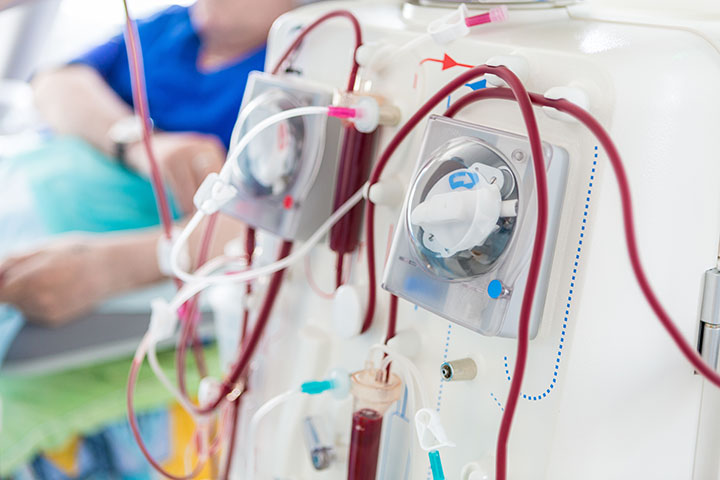Treatment
Once a person has ESRD, there are few treatment options. In order to maintain life, renal dialysis and/or a kidney transplant is needed. Patients can also opt to not have renal dialysis or a kidney transplant and try to make their remaining time as comfortable as possible through supportive care. Let’s explore the options of renal dialysis and kidney transplant.

Renal dialysis helps do what the kidneys are no longer able to do at an optimal level. Renal dialysis filters the blood and removes waste, salt, and excess fluid from building up in the body. However, this is done to maintain life and is not a cure. According to the NIH's latest statistics, of the more than 660,000 Americans living with ESRD, over 448,000 of them are on dialysis. There are two types of dialysis. They are hemodialysis and peritoneal dialysis. Your health care provider will help determine the best type of dialysis for you.
When a patient gets hemodialysis, a dialyzer (filter) is used to help remove waste and fluids. The dialyzer is sometimes referred to as an artificial kidney. It is used outside of the body. Two needles are placed in the arm, and the needles are then attached to a soft tube, which connects to the dialysis machine. In general, hemodialysis may last about four hours and needs to be done three times per week.
Peritoneal dialysis is done through the abdomen, and there are two types of peritoneal dialysis. The first is called continuous ambulatory peritoneal dialysis (CAPD). Prior to starting peritoneal dialysis, a catheter must be placed in the stomach. During this treatment, a dialysis solution is put in a bag and connected to the catheter. The dialysis solution works to absorb waste and excess fluid. CAPD takes a few hours to work. Afterward, the dialysis solution is drained from the stomach. Patients are able to go about their normal day while the dialysis solution is in the stomach. This process is generally done three to five times during a 24-hour period.
The other option for peritoneal dialysis is automated peritoneal dialysis (APD). With ADP a machine is delivering and draining the dialysis solution for you. A common time to do this treatment is at night or when you usually sleep.
A kidney transplant is another treatment option and is the optimal solution for ESRD. There are a lot of variables that affect getting a kidney transplant including finding a matching donor. The donor could be living or deceased, but the goal is to find a healthy kidney. After a kidney transplant, you can expect to have regular checkups during recovery to monitor progress and kidney function. A common risk after a kidney transplant is rejection of the kidney by the body. However, following a successful kidney transplant, kidney dialysis is no longer needed.






